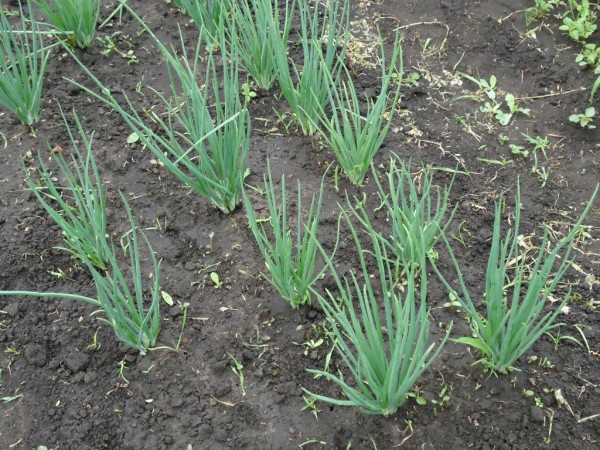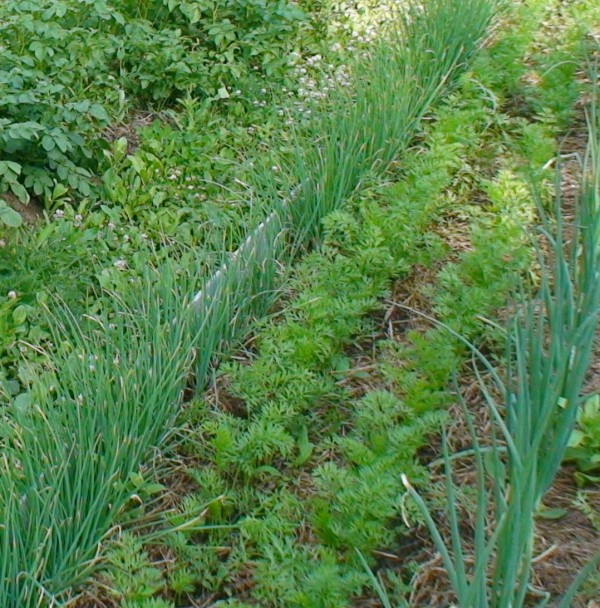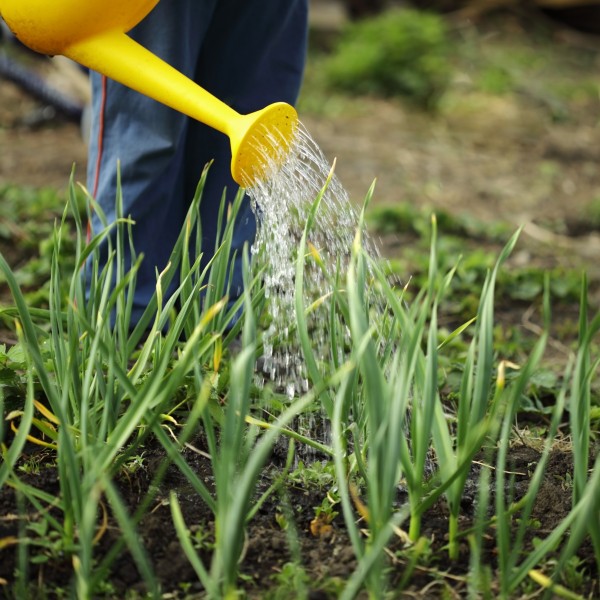How and when to plant onions on a turnip: basic techniques
Content
Growing methods
There are several ways to plant onions on a turnip: from seeds (growing onions from seeds in one season is quite possible), from seedlings, from seedlings. For beginners in gardening, the last method may be the easiest, since there will be less hassle than growing from seeds. Ideally, growing from seedlings involves a two-year agrotechnical cycle, in which seeds are sown in the first year and small bulbs up to 2 cm in diameter are grown. But you can also buy ready-made sets.
Before planting, the seedlings need to be sorted out, soaked in a weak solution of potassium permanganate for disinfection, and planted in open ground in the last days of April or early May. The main indicator is a sufficient soil temperature, in the range of 8-12 degrees, but not less than 7. If the soil is too cold, the onion will go into the arrow.
The bulbs are deepened into the soil by 2-3 cm, at a distance of five to ten centimeters from each other. The distance depends on whether the planting will be exclusively on the turnip, or part of the onion will go to greens. The distance between the rows should be at least 25 cm, in addition, it makes sense to alternate rows of onions with rows of carrots - this is a universal scheme for mutual repelling of pests.
Two to three weeks after planting, the onions must be fed with a mixture of nitrogen and potassium fertilizers. The second feeding can be done three weeks after the first, but reduce the amount of nitrogen, but increase potassium and phosphorus. Planting care includes loosening, watering, feeding, pest control.
Growing onions from seeds will be more productive in regions with warmer weather and longer summers, and in the Urals for growing from seeds, you need to choose early maturing varieties. Seeds must be soaked before sowing. They need to be planted in rows, embedding seeds one and a half centimeters into the soil, with a distance of about 20 centimeters between rows. After the emergence of seedlings, the rows are thinned out, leaving 2-3 centimeters between young plants. Then the onions need to be fed.
After about a month, the onions are thinned again, leaving 8-10 centimeters between the plants. This distance is the norm for growing quality bulbs. Depending on the condition of the onion and soil, you may need another feeding during this period. Water the onion, depending on the weather, after two to three days. When it rains frequently, additional watering is not required.
Video "How to plant onions correctly"
A detailed description of planting onions for beginner gardeners and gardeners.
When we sit down
The third method is growing from seedlings, and we will consider it in more detail.
The main factor that determines the success of this method is the quality of the seeds. Seeds for seedlings must be fresh, i.e. collected last fall.
Seeds are usually sown at the end of February, but in any case no later than the first decade of March. The soil for planting onions for seedlings is a mixture of garden soil and humus in a ratio of 1 to 1. Prepared soil is poured into boxes in a layer up to ten centimeters thick. The seeds are poured into the grooves of a centimeter deep, the grooves are repeated every five centimeters.
The boxes can be stored in a room or in a greenhouse. To get good seedlings, there must be enough light in the room. Also, at first, seedlings are often watered. Before the first shoots appear, the temperature must be maintained at 23-25 degrees, then the seedlings are hardened for several days at a temperature of about 10 degrees.
In the time remaining before planting, the temperature is kept at 15 degrees, you can take out the seedlings for a short time outside. Fortified seedlings must be thinned out, leaving seedlings at a distance of 2 cm from each other. You can plant seedlings in open ground after one and a half to two months, when young plants have at least 4 leaves. For better engraftment, the roots and leaves of the seedlings are shortened by about a third of the length. Further (in the beds) caring for onions from seedlings is similar to caring for onions grown from seeds.
Benefits of winter planting
There is another way - growing the so-called winter onions. It can be grown for both a feather and a turnip. It is possible to plant onions for the winter in the Urals, but preference should be given to local frost-resistant varieties. Planting onions in winter occurs no later than the end of October, when the ground has not yet had time to freeze. You can plant both shallow seedlings and seeds.
An additional plus for planting seeds is natural hardening. Sevok needs to be selected precisely small, which can dry out and in the spring turn out to be simply useless. The main principle of working with planting material is not to harm. This means that neither the seeds nor the seedlings are pre-soaked in case frost hits soon after planting. A dry set can survive the winter under the snow, and a previously soaked one will simply freeze out.
The sevok is planted to a depth of 4-6 cm. The distance between the bulbs should be up to 8 cm, between rows up to 20. You can sprinkle the bed with dry peat or sawdust. In case the frosts come before the snow, the bed should be covered with straw or pine needles.
In the spring, when the ground begins to thaw, straw and peat residues (sawdust) are removed - this will allow the bed to warm up. The first shoots will appear in a few days. Winter onions ripen by July; the advantage of this planting method is that the cultivation is ahead of the usual agronomic calendar.
The onion sprouts early shoots that are strong by the time weeds emerge, thus facilitating maintenance, loosening and weeding. In addition, winter onions will be sufficiently developed by the time of the mass appearance of pests, which means that they will not suffer so much. In such conditions, the turnip grows strong and has time to dry well before winter.
The main advantage of planting onions in winter, both when planting seedlings early, and when laying beds for the winter, is that the plants have more time to develop. This makes them stronger. In fact, the crop is grown by 20-30% more than with standard agricultural technology, and the bulbs are better stored at the same time.
Of the optional advantages - the onion planted with sevka for the winter almost does not give arrows, that is, reliable growing of turnip is ensured. You can find more free time to take care of the plantings. In addition, after harvesting winter onions, you can use this area to grow early ripening vegetables or greens.
Video "Growing turnip onions without the hassle»
Video instructions for planting onions and further caring for them at their summer cottage.





